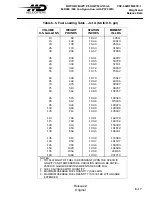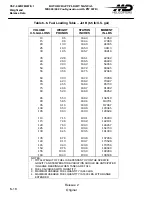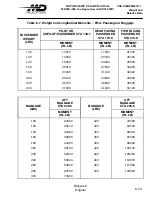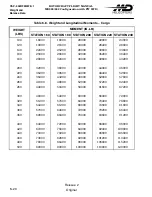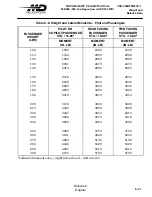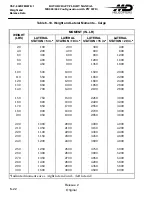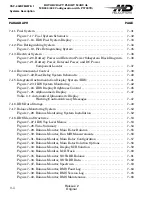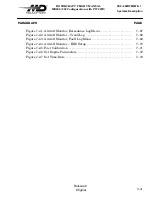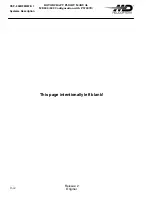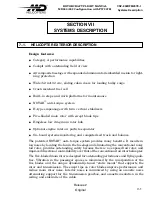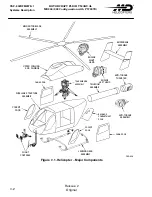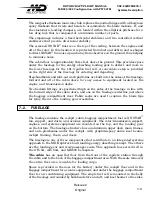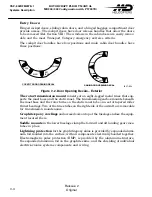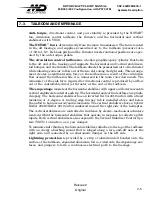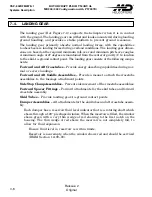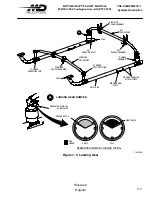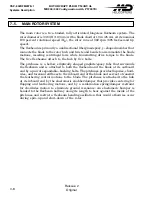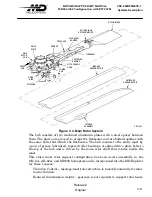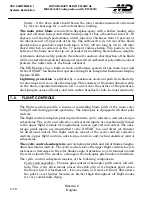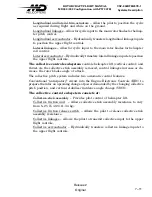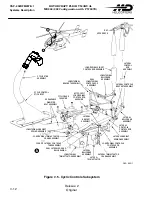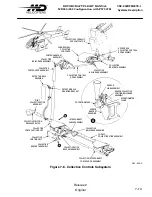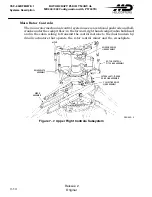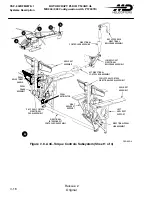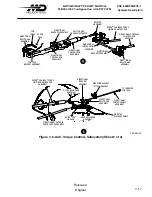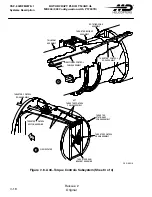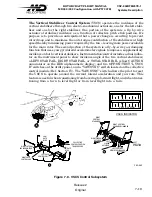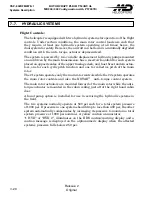
CSP
−
902RFM207E
−
1
ROTORCRAFT FLIGHT MANUAL
MD900 (902 Configuration with PW 207E)
Systems Description
Original
7
−
5
Reissue 2
7
−
3.
TAILBOOM AND EMPENNAGE
Anti-torque
, directional control, and yaw stability is provided by the NOTAR
fan, circulation control tailboom, the thruster, and the horizontal and vertical
stabilizers with VSCS.
The NOTAR
fan
is driven directly from the main transmission. The fan is located
in the aft fuselage, and supplies pressurized air to the tailboom (pressure ratio
= 1.02 to 1.12). Its blade pitch and the thruster nozzle rotational positions are oper
ated by the anti-torque pedals.
The circulation control tailboom
is a hollow graphite/epoxy cylinder that bolts
to the aft end of the fuselage and supports the horizontal and vertical stabilizers,
tail bumper, and the thruster. The tailboom directs the pressurized air to the thruster
while allowing some air to flow out of the two slots along its right side. This arrange
ment creates a significant side force on the tailboom as a result of the circulation
flow around the tailboom while it is immersed in the main rotor downwash. The
remainder of the side force required for directional control is produced by airflow
out of the controllable direct jet thruster at the end of the tailboom.
The empennage
consists of the horizontal stabilizer with upper and lower moveable
vertical stabilizers located at each tip. The horizontal and vertical surfaces are graph
ite/epoxy. The horizontal stabilizer has an inverted NACA 2412 airfoil with a fixed
incidence of -1 degree. A trailing edge Gurney tab is installed above and below
the airfoil to balance aerodynamic moments. The vertical stabilizers have a hybrid
NACA 23012/NACA 0012 airfoil cambered toward the right side of the helicopter.
The vertical stabilizers are controlled in incidence by electro-mechanical actuators
located within the horizontal stabilizer that operate in response to collective pitch
inputs. Both vertical stabilizers also respond to the Vertical Stabilizer Control Sys
tem (VSCS) to function as a yaw damper.
To minimize tail vibration, the horizontal stabilizer attaches to the top of the tailboom
with an energy absorbing mount that is hinged along a fore-and-aft axis at the
right side, and connected by an elastomeric damper on the left side.
Lightning protection
is provided by a strip of aluminum foil bonded onto the
surface of the tailboom, expanded aluminum foil co-cured onto the empennage sur
faces, and jumpers to form a continuous electrical path to the fuselage.
Summary of Contents for MD900 Explorer
Page 4: ......

